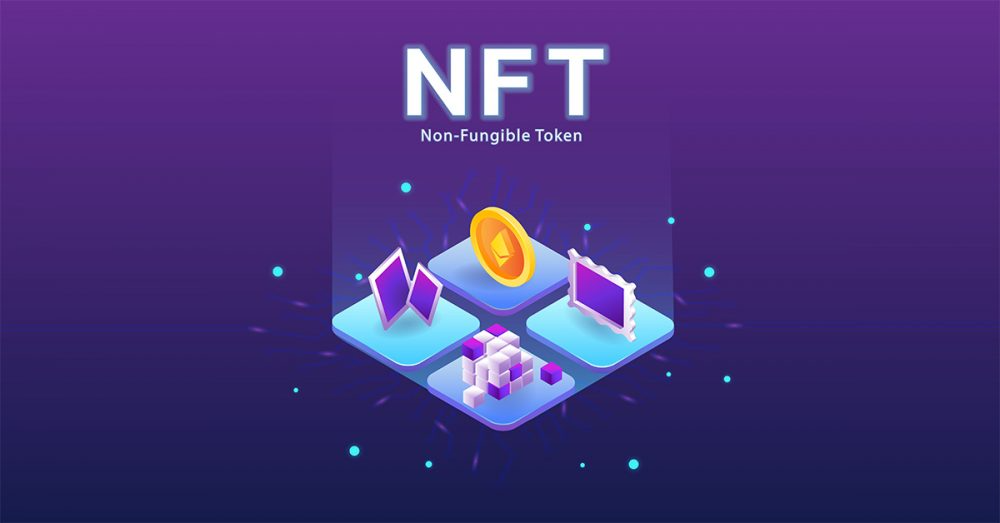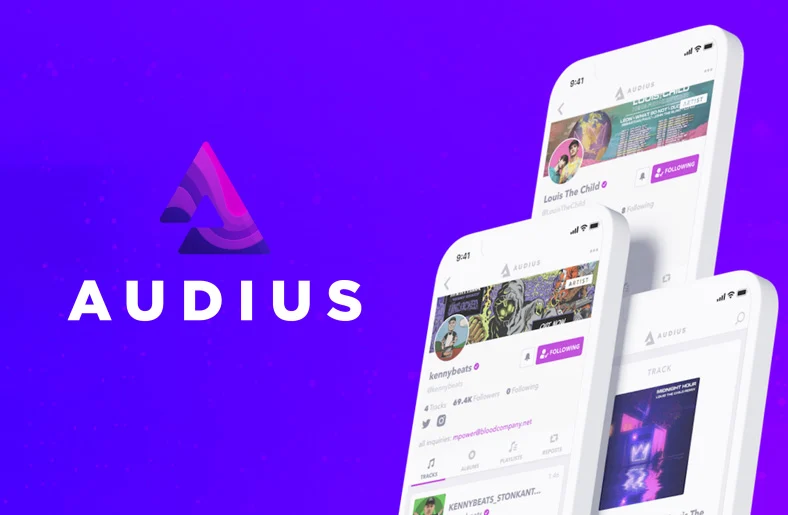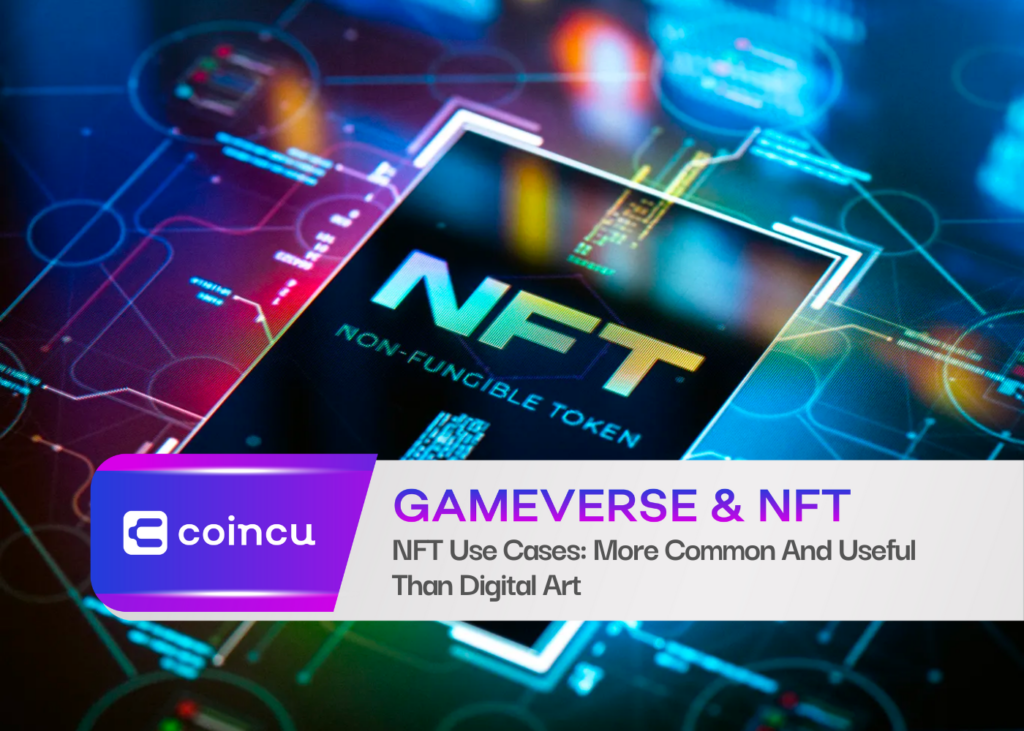NFTs are arguably the first instance of verifiable uniqueness and scarcity of digital assets. Currently, they are often associated with digital art and profile pictures; however, NFT use cases are much more than just “small pictures.” It has been developed into music, games, digital identities, social media, real-world assets, carbon trading markets, and Web3 applications to alleviate problems in the corresponding Web2 domains.

Music and Streaming
On Web2 streaming platforms like Spotify or Apple Music, musicians typically earn less than $0.01 per session; however, Web3 music platforms like Audius, Sound.xyz, and Catalog enable musicians to monetize their work directly. They can make audio content into NFTs, better connect and interact with their followers, and increase exposure — all without middlemen.

Music NFT platforms have yet to gain mainstream attention, with total weekly transaction volumes consistently below 100 ETH for the past 6 months. Furthermore, the total number of unique users of these platforms is 11,000, which is less than 1% of the entire NFT market user base. Most of these platforms have similar NFT marketplaces embedded with basic functions but often lack new built-in functions that can be easily converted to streaming or sharing music.
For these reasons, they failed to attract a large user base. Music NFT platforms can foster future adoption by launching new product features, incentive programs, or attracting major music icons.
Decentralized social media
Compared to its Web2 predecessor, decentralized social media brings privacy, censorship resistance, ownership of personal data, and an easier path for users to monetize their content. NFTs have become the backbone of many Web3 platforms in the form of:
- Digital Profiles and Identity
- Content presentation
- As an incentive to promote participation
- Gated content
The Lens protocol is arguably one of the most widely used social graphs, currently supporting social media front-end applications such as Lenster and Phaver. The protocol has retained an average of 35,000 active users over the past 3 months, and its engagement (including posts, comments, and retweets) has increased since May.
That said, the number of new accounts created on Lens has dropped by more than 92% compared to September, largely because permission was still required to create accounts while the protocol was in beta.
Lens’ open social graph is widely used, in part because of the growing number of front-end applications for it beyond just a social media one. The growing distrust of traditional Web2 social media has also increased its adoption.
Decentralized social allows users full control over their data and enables portability between different hosted applications. However, many of these apps are still in their infancy and have yet to create a sufficiently revolutionary user experience or functionality to attract users at scale.
Digital identity
In the case of on-chain authentication, NFTs can be used to store and verify educational credentials, professional licenses, and other forms of qualifications and identities. Each NFT can contain a unique set of data and metadata used to verify the authenticity and ownership of the voucher.
This allows for trustless and straightforward, secure verification of an individual’s qualifications, skills, or other information. Overall, putting credentials on-chain reduces the costs associated with trust services, reduces fraud and tampering, and potentially restores users to a sense of control over their personal data.
Over the past year, a number of different authentication platforms have emerged, such as identity, proof of attendance, and learn-to-earn platforms, bringing together nearly 4 million users to the industry.
While Proof-of-Participation protocols like POAP currently hold the majority of the market share of this user base, aggregators have been rapidly cannibalizing their share. As with most racetracks in the crypto world, authentication protocols are fairly siled and lack interoperability. Aggregators like Galxe can help alleviate this problem by allowing users to transfer their credentials between chains and platforms.
Game
In terms of on-chain gaming, NFTs are used to represent unique in-game assets such as characters, items, and virtual real estate. NFTs create scarcity and value in the GameFi world, allowing users to own, trade, and sell in-game items. Compared with traditional games, on-chain games create better earning opportunities and easier asset transfers for users.
In gaming apps, monthly active users are down 30% since October and new users are down 34%. Most of these projects struggle with sustainability because they fail to create engaging experiences for users looking for quick rewards. Perhaps, improving the traditional in-game assets so they can interoperate between apps might help improve the gaming experience.
Tokenization of real assets
Real-world assets are assets that exist in the real world, and ownership can also be represented and proven through NFT. Tokenizing real-world assets can allow corresponding assets to be better used, stored, and tracked on the chain, thereby having the opportunity to solve problems such as inefficiency, human error, and fraud in the real world. The tokenization of real assets often appears in the following areas:
- Real estate
- Supply chain
- Capital market assets
- Document
- Fashion
- Collection
By tokenizing these assets, interested parties often save on costs that would otherwise be spent on intermediaries and are more easily verifiable. However, putting physical assets on-chain requires more robust infrastructure, a higher degree of human oversight, and a different regulatory pathway. For financial assets, settlement collateral is untested mainly in the event of default. The fact that the entire process has yet to be standardized or regulated is one of the roadblocks on its way to mass adoption.
Voluntary carbon market
The regenerative finance (ReFi) industry has expanded significantly over the past year. It now includes a carbon credit market, tokenization infrastructure and MRV (measurement, reporting and verification). In most cases, carbon removal credits are tokenized on-chain as NFTs. Once issued or redeemed in the real world, unique tokens are destroyed and therefore cannot be traded on secondary markets.
The current voluntary carbon market lacks transparency and credibility. Putting carbon credits on-chain can help alleviate some of the problems of the carbon credit market, such as fake credits, double spending, and lack of price discovery. It also lowers the barriers to entry for potential investors and credit providers looking to secure funding for their carbon removal methods. Like other real-world assets, voluntary carbon markets face a greater degree of centralization risk due to the current necessary oversight by carbon credit registries such as Verra.
Non-fungible applications
A Non-fungible application (NFA) takes on-chain metadata related to running a decentralized application and stores it on top of the ERC-721 NFT standard. Essentially, the code and data behind Web3 applications live in NFTs, decentralizing the execution, operation and ownership of the application.
NFA handles everything related to keeping the application running, such as relational databases, decentralized hosting of payments, storage and build history. They also make applications portable: creators only need to transfer the NFT to transfer the entire application.
Web3 applications currently rely on centralized front-end solutions to provide hosting and storage services, making them vulnerable to phishing attacks and exploitation. NFA helps address these issues by decentralizing ownership, increasing censorship resistance, and empowering community participation. Fleek is pioneering the capabilities of traditional NFTs and expects to release a platform using the technology early this year.
For now, the development of NFA is still in its infancy. It currently lacks the ability to automatically renew contracts and facilitate agreement payments, and will rely on the current more centralized mechanism for some time in the future.
Key event
Visa and Alchemy Pay Collaboration
- Alchemy Pay has become one of Visa’s official service providers;
- As an extension of the deposit and withdrawal channels, Alchemy Pay will be able to provide fiat currency payments to purchase cryptocurrencies for Visa cardholders in more than 173 different countries;
- Alchemy Pay has been integrated into various DEXs, CEXs and wallets and is one of the first partnerships with major financial institutions.
The402 Integration with Lens
- The402, an encrypted live streaming service, is now integrated with the decentralized social graph Lens Protocol;
- It is now possible to set token thresholds for live, chat, and video content for its Lens followers.
Robinhood Releases Crypto Wallet
- Robinhood releases crypto wallet feature to over 1 million alternate users;
- The app supports internally traded tokens and NFTs, all without transaction fees;
- Robinhood has attracted many retail investors since its launch, mainly through its free trading. Release of non-custodial wallets to this segment of investors has the potential to attract many retail investors into the cryptocurrency space.
Rally closes sidechain
- Social token platform Rally shut down its sidechain due to poor market conditions;
- The Rally team warned users that their NFTs are not transferable back to the Ethereum mainnet.
Top Movers
- Mask Network has rallied more than 109% in the last month on the possibility that Elon Musk will integrate it into Twitter to support payments. The price of Audius also increased by more than 120% after the token was launched on Coinbase.
- Finally, certified aggregator Galxe leads the decentralized social assets space, up over 152% over the past 30 days.
DISCLAIMER: The Information on this website is provided as general market commentary and does not constitute investment advice. We encourage you to do your own research before investing.
Join us to keep track of news: https://linktr.ee/coincu
Website: coincu.com
Harold
Coincu News





